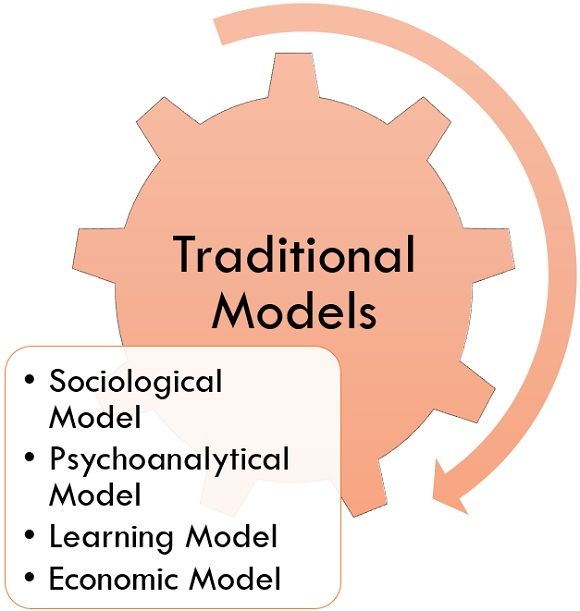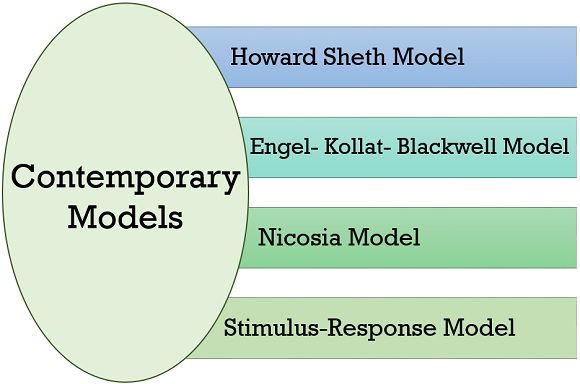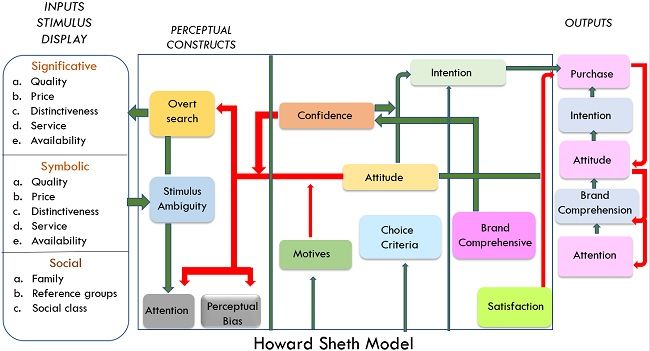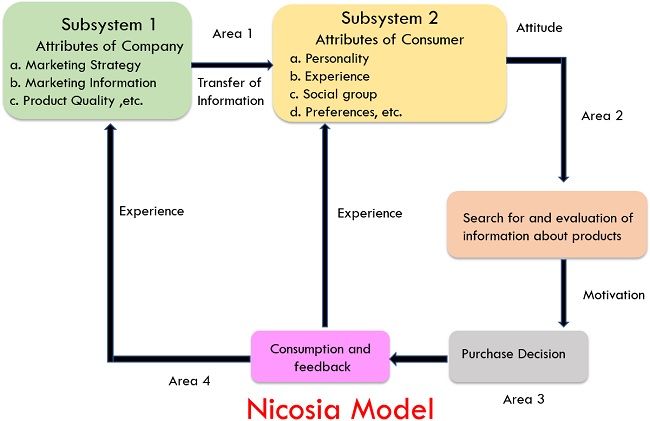Definition: Consumer Behaviour is the analysis of the individual’s responses and approaches to fascinate their wants and desires. It involves procedure by which consumers acknowledge their utilization issue, seeks for information, classify options feasible in the market, build a conclusion and select a product, utilize and adapt the product for comfort and pleasure.
It comprises of all the techniques beginning with the identification of consumer’s disputes, how he assembles facts from numerous internal and external sources, then use distinctive judgmental tests to choose the products, utilizes the product and eventually destroys or sell the product.
Content: Consumer Behaviour
Why is it important to understand Consumer Behaviour?
It is very important for any organization to study the behaviour of the consumers to survive in the market full of competition for which they need to perform proper research. In general, a consumer’s behaviour depends on factors such as nature, experience, lifestyle, and choice. But, it is essential for any organization to analyze the ultimate user’s preferences to be successful in any business line. An organization must reveal the consumer’s thinking pattern about the alternatives, their choices criteria’s, their searching patterns for the products and the most important aspect their feedback regarding products as to understand consumer behaviour is not only important for attracting new customers but it is also necessary to retain the existing customers. This can be understood more precisely with the help of the consumer behaviour models, let us understand them in brief:
Consumer Behaviour Models
An organization needs to recognize and accept the consumer’s feedback concerning various product features, cost and displaying interests, along with their impact on the products developing an aggressive limit over the other products. There are two most common models, traditional model and contemporary models.
1. Traditional models
Traditional models consist of four different models; they are as follows:

- Economic Model
This model focuses on the “act of purchase” of “Average consumer” and describe what a buyer would buy and “In what quantity”. Under the economic model of consumer behaviour, buyers try to enlarge the efficiency of products based on the law of diminishing marginal utility. The needs of buyers to earn the utmost profits by investing a minimum amount acts as the origin for the foundation of this model.
- Learning Model
Every human has an elementary desire such as food, shelter, clothes, etc. and the behaviour of the consumer depends upon the need to captivate such necessary wants. The needs of a customer decide whether he will buy a product or not. If he requires food, then he will not purchase clothes or postpones the idea of buying clothes at that point of time or will buy it later when his/her pocket allows them to buy.
-
- Psychoanalytical Model
This model considers the fact that consumer behaviour is affected by both the conscious and unconscious mind. The three levels of consciousness explained by Sigmund Freud are (id, ego and superego). In which id is an individual’s identity with which he/she is born with, superego is formed out of values, and ego acts as a balance between id and superego. All try to affect purchasing choices and actions of the consumers. The ambiguous figure is a company’s name or logo, it may have an impact on human’s unconscious mind and may affect him/her to purchase that product rather than a similar product from other company.- Example: In today’s market, there are numbers of fake products which are a true copy of the original brand. Suppose there is a true copy of ABC brand in the market, almost everything is same, packaging, colour, picture, only a little or slightly change in the logo or spelling of the name of the product. But customer’s unconscious mind believes that the product is a real one, even if it is fake and they buy it. It may be because of their unawareness about the product or maybe the customer is in a hurry.
- Psychoanalytical Model
- Sociological Model
Sociological model aims attention primarily on the lifestyle and associated product demand of the consumer in the society. According to this model, an individual buyer is a member of an association called “society”, and gets affected by it and consecutively also affects it in its course of improvement. Here, there are two types of groups which affect the buying behaviour of a consumer; they are Primary and secondary group.- Primary group: Its members are moreover friends, relatives and family members.
- Secondary group: Its members are society, personality type, and requirements based on the same.
2. Contemporary models
These models also consist of four models; they are as follows:

- Howard Sheth Model
Consumer behaviour’s Howard Sheth Model defines the difficulties that have to face while understanding the customer’s behaviour, such as their attitude and way of response.

Howard Sheth Model is positioned on four different variables. They are as follows:
-
- Input variables: Significance stimuli, Symbolic stimuli, and Social stimuli are three important stimuli’s without which necessary purchase decisions cannot be made. Inputs are given by these three stimuli’s in Howard Sheth Model. Here, uniqueness, quality, stock availability, price and service effectiveness are the features of the tangible products which refers to significance stimuli. On the other hand, the opinion of a person about features of a product is mentioned under symbolic stimuli whereas, social stimuli by its name only define that it relates to the elements belonging to the social group of the customer such as family, reference groups and the financial status of the customer in the society.
- Output variables: After purchasing the commodities from the market, the level of their satisfaction or dissatisfaction, and the factors affecting customers to buy or not to buy product states the output variables in Howard Sheth Model. The more the customer will be satisfied, the more brand value will raise, vis-a versa, dissatisfaction leads to a decline in brand value.
- Hypothetical constructs: Attitude, desire, research and perception are the psychological variables which affect the consumer’s decision-making techniques. Here, hypothetical constructs have been classified into two groups:
- Perceptual constructs: Perceptual constructs manage the way; a person identifies and acknowledges the information.
- Learning constructs: It manages the way, how buyer forms attitudes, opinions and knowledge influencing his buying decisions and also an evaluation after purchase.
- Exogenous variables: Indirect effect on the consumer’s decision making such as the financial status of a consumer, essentiality to buy a product comes under exogenous variable of Howard Sheth Model.
- Engel-Kollat-Blackwell Model (1978)
This model is constructed to solve the problems faced in understanding the consumer’s behaviour; it considers the information collected and the facts of the consumer to come to a conclusion that on what factors customer decides on buying a product. In this model, they notice the customers decision-making process and come up with four distinctive activities occurring in their decision-making process. They are as follows:
-
- Identification of problems: Customer identifies the difference amidst the actual situation and what the case should be in that state. This happens because of external stimuli.
- Searching facts: There are very high chances that the information which customer already have is based on the other’s opinion and assumptions and the not the customer’s point of views, as it is challenging for the customer to collect information from various sources.
- Assessment of other possible choices: Before buying any product, the customer researches various products of different brands according to their need and affordability to buy such a product.
- Selection: The customer’s choice depends upon two factors whether he/ she may buy a product with their wish or need or may also with an influence of friends or relatives, who suggested to buy that product.
- Nicosia Model
This model displays the reciprocal relations between the company and the customer and originates among them for bilateral communication. Companies interact with customers through promotional exercises, although customers communicate by purchasing products. In Nicosia model, the decision-making process is divided into four areas; they are:
In Nicosia model, the decision-making process is divided into four areas; they are:
-
- Consumer Attitude: Consumer attitudes are formed by news and data gathered from the market. In this area, information flows from the origin of their formation to the recipient.
- Research and evaluation: In this area, consumers expect news about explicit products and provide them value. At the time of evaluation, the consumer assigns relevant emphasis on every news.
- Act of purchase: After evaluation and analysis, when a customer is delighted with a product than they are motivated to buy that product, then they purchase the product and use it.
- Feedback: Feedback is a form of response which comes after consuming the product. It may be each of two positive or negative.
- Stimulus-Response Model
Stimulus-response model of consumer behaviour helps in understanding how consumer builds decisions during the purchase of a product. Marketing stimulation creates an impact on the consumer’s mind to make a decision of buying a product. A good marketer is one who understands the consumer’s mind and converts their wish to buy into a real-time purchase of a product.
Marketing stimuli involves four Ps
-
- Product
- Price
- Place
- Promotion
Other stimuli consist of significant forces and events in the consumer’s environment, i.e.
-
- Economic
- Technological
- Political
- Cultural
All these inputs come in the consumer’s mind where they become a set of apparent consumer responses, i.e.
-
- Product choice
- Brand choice
- Dealer choice
- Purchase timing
- Purchase amount
The marketer wants to understand how the stimuli are changed into responses inside the customer’s mind which have two parts:
-
- The buyer’s trait affect how he/she recognize and respond to these stimuli and;
- The buyer’s decision process affects the buyer’s behaviour.
Conclusion
Consumer Behaviour is the customer’s response towards the product; it may be a single person decision or a group decision whether to buy a product or not, which depends on the customer’s actual need and sometimes because of good services customer purchases product.
Leave a Reply